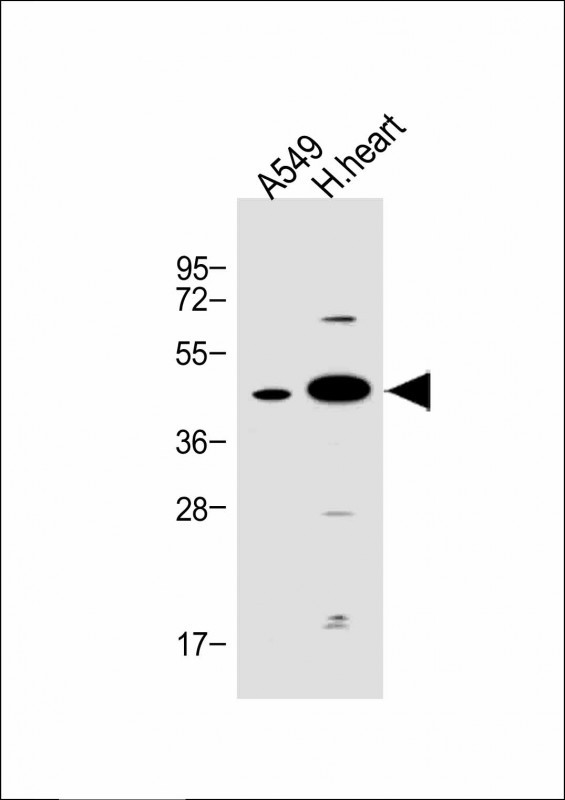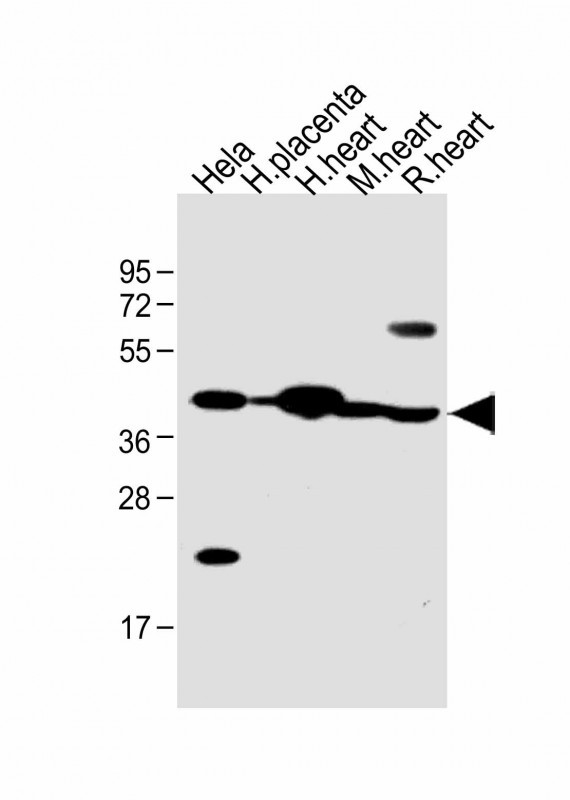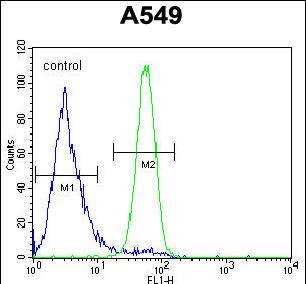FSTL1 Antibody (C-term)
Affinity Purified Rabbit Polyclonal Antibody (Pab)
- SPECIFICATION
- CITATIONS: 3
- PROTOCOLS
- BACKGROUND

Application
| FC, WB, IHC-P, E |
|---|---|
| Primary Accession | Q12841 |
| Other Accession | Q9GKY0, NP_009016.1 |
| Reactivity | Human, Mouse, Rat |
| Predicted | Monkey |
| Host | Rabbit |
| Clonality | Polyclonal |
| Isotype | Rabbit IgG |
| Calculated MW | 34986 Da |
| Antigen Region | 280-308 aa |
| Gene ID | 11167 |
|---|---|
| Other Names | Follistatin-related protein 1, Follistatin-like protein 1, FSTL1, FRP |
| Target/Specificity | This FSTL1 antibody is generated from rabbits immunized with a KLH conjugated synthetic peptide between 280-308 amino acids from the C-terminal region of human FSTL1. |
| Dilution | FC~~1:10~50 WB~~1:1000 IHC-P~~1:50~100 E~~Use at an assay dependent concentration. |
| Format | Purified polyclonal antibody supplied in PBS with 0.09% (W/V) sodium azide. This antibody is purified through a protein A column, followed by peptide affinity purification. |
| Storage | Maintain refrigerated at 2-8°C for up to 2 weeks. For long term storage store at -20°C in small aliquots to prevent freeze-thaw cycles. |
| Precautions | FSTL1 Antibody (C-term) is for research use only and not for use in diagnostic or therapeutic procedures. |
| Name | FSTL1 |
|---|---|
| Synonyms | FRP |
| Function | Secreted glycoprotein that is involved in various physiological processes, such as angiogenesis, regulation of the immune response, cell proliferation and differentiation (PubMed:22265692, PubMed:29212066). Plays a role in the development of the central nervous system, skeletal system, lungs, and ureter (By similarity). Promotes endothelial cell survival, migration and differentiation into network structures in an AKT-dependent manner. Also promotes survival of cardiac myocytes (By similarity). Initiates various signaling cascades by activating different receptors on the cell surface such as DIP2A, TLR4 or BMP receptors (PubMed:20054002, PubMed:22265692). |
| Cellular Location | Secreted. |
| Tissue Location | Overexpressed in synovial tissues from rheumatoid arthritis (PubMed:15638044). |

Provided below are standard protocols that you may find useful for product applications.
References
Kai, N., et al. Brain Res. 1073-1074, 60-70 (2006) :
Venter, J.C., et al. Science 291(5507):1304-1351(2001)
If you have used an Abcepta product and would like to share how it has performed, please click on the "Submit Review" button and provide the requested information. Our staff will examine and post your review and contact you if needed.
If you have any additional inquiries please email technical services at tech@abcepta.com.














 Foundational characteristics of cancer include proliferation, angiogenesis, migration, evasion of apoptosis, and cellular immortality. Find key markers for these cellular processes and antibodies to detect them.
Foundational characteristics of cancer include proliferation, angiogenesis, migration, evasion of apoptosis, and cellular immortality. Find key markers for these cellular processes and antibodies to detect them. The SUMOplot™ Analysis Program predicts and scores sumoylation sites in your protein. SUMOylation is a post-translational modification involved in various cellular processes, such as nuclear-cytosolic transport, transcriptional regulation, apoptosis, protein stability, response to stress, and progression through the cell cycle.
The SUMOplot™ Analysis Program predicts and scores sumoylation sites in your protein. SUMOylation is a post-translational modification involved in various cellular processes, such as nuclear-cytosolic transport, transcriptional regulation, apoptosis, protein stability, response to stress, and progression through the cell cycle. The Autophagy Receptor Motif Plotter predicts and scores autophagy receptor binding sites in your protein. Identifying proteins connected to this pathway is critical to understanding the role of autophagy in physiological as well as pathological processes such as development, differentiation, neurodegenerative diseases, stress, infection, and cancer.
The Autophagy Receptor Motif Plotter predicts and scores autophagy receptor binding sites in your protein. Identifying proteins connected to this pathway is critical to understanding the role of autophagy in physiological as well as pathological processes such as development, differentiation, neurodegenerative diseases, stress, infection, and cancer.





